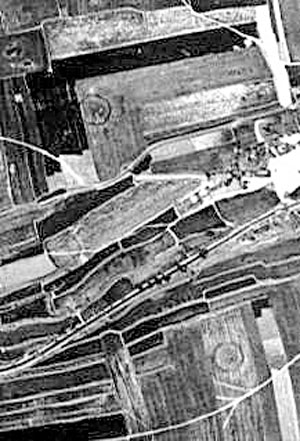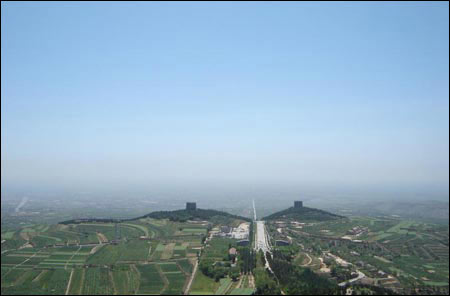| Tools: Save | Print | E-mail | Most Read |
| Crop Circles Appear at Tomb of Chinese Empress |
| Adjust font size: |
Chinese archaeologists have found a group of vast rings at the site of the 1,300-year-old tomb of Wu Zetian, China's only empress, but are unable to explain their existence.
Most of the rings are between 30 to 40 meters in diameter and are situated in an area four kilometers long from east to west and two kilometers from south to north, said Qin Jianming, a researcher with the center. The most eye-catching was the largest ring, with a diameter of 110 meters, he said. Qin said the foundation of the largest ring was three meters thick with a color markedly darker than the fields. Three quarters of the ring were clearly visible, despite being broken by a footpath. "At first we believed the rings were atmospheric phenomena caused by lights, but after analysis and comparison with previous aerial photos, we are sure they are historic remains," he said. Located 80 kilometers northwest of Xi'an, lies the joint tomb of Wu Zetian, who ruled for 50 years, and her husband, Emperor Li Zhi of the Tang Dynasty (618-907). It is the only tomb in China which contains the bodies of two rulers. Wu Zetian was buried in the tomb 22 years after her husband. Qianling is the best preserved ancient tomb in China and has survived without being looted. The researchers conducted a ground search for the rings three to five kilometers from Lianshan mountain range, which was the territory of Qianling, but they proved difficult to see from the ground.
Despite searches of historical records, the researchers still have no idea of the purpose of the rings or their relation with the tombs. "Based on our experience, we assume they were tunnels built in ancient times," said Qin. However, the center of the largest ring was an excavated tomb belonging to a ruler of the Yan State in the Tang Dynasty, a subsidiary tomb of Qianling, but it remains uncertain whether the ring was part of the tomb, said Fan Yingfeng, head of the Qianling Museum. "Human activities in that area began in New Stone Age. Emperor Qin Shihuang built a palace there and rebellious forces in late Tang Dynasty occupied the area as well," he said. Experts said the discovery indicated there might be more historic relics yet to be discovered in the Qianling area.
Qianling Mausoleum (Xinhua News Agency December 21, 2006) |
| Tools: Save | Print | E-mail | Most Read |
 |
| Related Stories |
|


